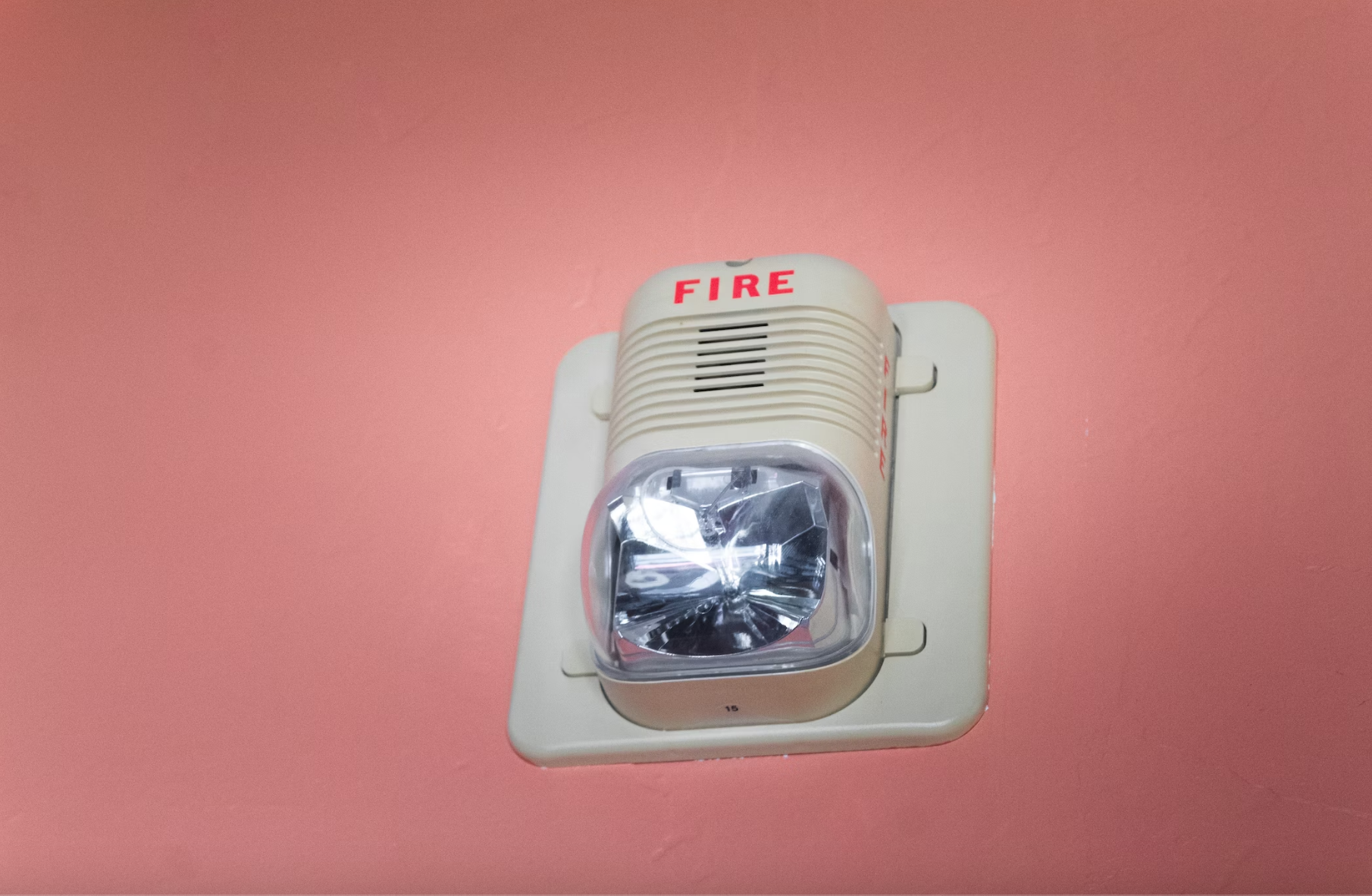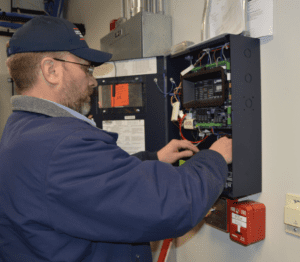
Explaining the Basics of Fire Alarm Systems
Fire alarm systems are an indispensable part of any commercial fire protection plan. A well-kept and functioning alarm system can detect fire as soon as it starts, alert occupants to the danger, minimize the hazards of flames and smoke, and notify emergency responders.
In order to get the most out of your business’s fire alarm system and protect your personnel and property, it’s important to understand an alarm system’s many functions, essential parts, states of operation, and maintenance requirements.
Here are some of the basics you should know.
What Do Fire Alarm Systems Do?
In 2020, a total of 16,500 office and store fires in the U.S. caused over $900 million in direct property damage.
To help minimize the dangers to your building’s physical property and occupants, investing in a properly working fire alarm system is crucial. These life safety solutions serve a few critical purposes that work together to reduce the impact of a fire, including:
Detect fire
A responsive fire alarm system will activate when its sensors detect two of the most unmistakable signs of fire: smoke and heat. An alarm system may also go off when it detects activity in the building’s fire sprinkler system.
As an added precaution, alarm systems are also equipped with manual pull levers, which allow occupants to activate the alarm as soon as a fire is spotted, before the smoke and heat have a chance to even reach the system’s sensors. Training all personnel on how to use these smoke and heat detectors is an effective way to minimize the damage fire can cause.
Alert occupants
Once a fire detection system is activated by smoke, heat, or sprinkler activity, it immediately notifies occupants with both visible and audible signals. Audible fire alarms are very loud and unpleasant, making them difficult to mishear or ignore. Occupants with hearing impairments will be alerted by continuous flashing lights.
Minimize hazards
Fire alarm systems are also equipped with control measures that minimize the hazards that fire presents, especially its potential to spread and produce dangerous smoke. These measures include automatic door closures in specific zones, the ability to shut down air conditioning and ventilation, and the power to direct elevators to move to a designated floor.
Notify emergency responders
In the event of a fire, there’s only so much you and your personnel can do to reduce the risk of injury and property damage. Once triggered, an alarm system sends a signal to emergency responders so that the fire department can react as quickly as possible and extinguish the flames.
Essential Parts of a Fire Alarm System
Fire alarm systems are complex and made up of many different components, all of which must be in good working order to ensure maximum fire safety.
Initiating devices
As their name implies, initiating devices are the first line of defense in a fire alarm system. They include smoke detectors, heat sensors, and sprinkler water flow sensors that all serve to trigger the alarm when a fire is present.
Indicating appliances
Indicating appliances are the parts of the system that alert occupants to a fire. These can produce audible smoke detector alarms such as horn sounds, bells, and chimes, as well as visual cues like flashing lights.
Fire alarm control panel
Control panels give authorized parties a way to control and monitor the various elements of the entire fire alarm system. They display the current state of the system and feature controls that program, silence, troubleshoot, and, if needed, restart the system.
The panel is also responsible for sending out the signal to emergency responders that a fire is present and needs immediate attention.
Power supplies
Power is supplied to a fire alarm system primarily from the main breaker, but there are also a few backups in place for unexpected circumstances. Battery backups can keep the alarm running if the power goes out for up to 24 hours, and a generator is often also used to supply power in the event of a longer outage.
Three States of Operation
In addition to its other capabilities, the fire alarm control unit mentioned above also monitors the system as a whole and indicates to users which of the following conditions the system is in.
Normal condition
Under normal conditions, the alarm system is working as it should. All devices, appliances, and power supplies are operating properly, and no alarms have been activated.
Alarm condition
When the system has been activated, it switches into an alarm state. This is when the audible and visual alarms go off, hazard control measures are put into place, and emergency responders are contacted. During an alarm condition, the control panel will indicate which areas are showing signs of fire and smoke so that emergency efforts can be deployed accordingly.
Trouble condition
In trouble conditions, the fire alarm panel detects an issue within the system itself and points you in the direction of the problem. Issues can include shorts in the circuits connecting the panel to other devices in the system or malfunctions in your sprinkler and suppression systems.
Keeping Your Fire Alarm System Ready
 Over time, fire alarm system components degrade, problems arise, and new technology emerges that can replace and improve older systems. As a result, it’s important to assess your alarm system regularly and perform maintenance and upgrades as needed. There are several different ways to ensure that your alarm system and facilities are ready for a fire event, including:
Over time, fire alarm system components degrade, problems arise, and new technology emerges that can replace and improve older systems. As a result, it’s important to assess your alarm system regularly and perform maintenance and upgrades as needed. There are several different ways to ensure that your alarm system and facilities are ready for a fire event, including:
- Having semi-annual professional inspections to ensure compliance with local codes
- Performing routine maintenance, repairs, and upgrades to keep the fire detection system functional
- Providing all personnel with fire safety training, including the basics of the alarm system and how to locate and use fire extinguishers
- Learning how to monitor and use the fire alarm control panel so that you can address problems within the system in a timely manner
Fireproof Your Business with Kistler O’Brien Fire Protection
Maximizing fire safety at your business begins with state-of-the-art and functioning fire protection systems. Our experienced and industry-certified team at Kistler O’Brien Fire Protection can help.
We provide businesses across Pennsylvania, New Jersey, and Delaware with a full range of fire protection services, including installing, inspecting, repairing, and upgrading fire alarm systems. We can also train your personnel to respond to fire events appropriately and use fire safety equipment effectively.
Take the first step toward fireproofing your business by scheduling service today.

